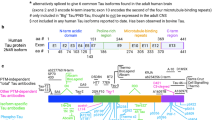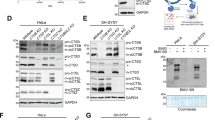Abstract
Phosphatases extracted from a human brain were resolved into two main groups, namely affi-gel blue-binding phosphatases and affi-gel blue-nonbinding phosphatases. Affi-gel blue binding phosphatases were further separated into four different phosphatase activities, designated P1-P4, and described previously (1). In the present study we describe the affi-gel blue-nonbinding phosphatases which were separated into seven different phosphatase activities, designated P5-P11 by poly-(L-lysine)-agarose and aminohexyl Sepharose 4B chromatographies. These seven phosphatase activities were active toward nonprotein phosphoester. P7-P11 and to some extent P5 could also dephosphorylate a phosphoprotein. They displayed different enzyme kinetics. On the basis of activity peak, the apparent molecular mass as estimated by Sephadex G-200 column chromatography for P5 was 49 kDa; P6, 32 kDa; P7, 150 kDa; P8, 250 kDa; P9, 165 kDa; P10, 90 kDa and P11, 165 kDa. Immunoblot analysis indicated that P8-P11 may belong to PP2B family, whereas P7 may associate with PP2A. The phosphatases P7-P11 were found to be effective in the dephosphorylation of Alzheimer's disease abnormally hyperphosphorylated tau. The resulting dephosphorylated tau regained its activity in promoting the microtubule assembly, suggesting that P7-P11 might regulate the phosphorylation of tau protein in the brain.
Similar content being viewed by others
REFERENCES
Cheng, L. Y., Wang, J. Z., Gong, C.-X., Pei, J. J., Zaidi, T., Grundke-Iqbal, I., and Iqbal, K. 2000. Multiple forms of phosphatase from human brain: isolation and partial characterization of affi-gel blue binding phosphatases. Neurochem. Res. 25:107–120.
Terry, R. D., Peck, A., Teresa, R., Schechter, R., and Horoupian, D. S. 1981. Some morphometric aspects of the brain in senile dementia of the Alzheimer type. Annu. Neurol. 10:184–192.
Pearson, R. C. A., Esiri, M. M., Hiorns, R. W., Wilcock, G. K., and Powell, T. R. S. 1985. Anatomical correlates of the distribution of the pathological changes in the neocortex in Alzheimer disease. Proc. Natl. Acad. Sci. USA 82:4531–4543.
Arriagada, P. V., Growdon, J. H., Hedley-Whyte, E. T., and Nyman, B. T. 1992. Neurofibrillary tangles but not senile plaques parallel duration and severity of Alzheimer's disease. Neurology 42:631–639.
Grundke-Iqbal, I., Iqbal, K., Quinlan, M., Tung, Y.-C., Zaidi, M. S., and Wisniewski, H. M. 1986. Microtubule-associated protein t: A component of Alzheimer paired helical filaments. J. Biol. Chem. 261:6084–6089.
Grundke-Iqbal, I., Iqbal, K., Tung, Y.-C., Quinlan, M., Wisniewski, H. M., and Binder, L. I. 1986b. Abnormal phosphorylation of the microtubule associated protein in τ in Alzheimer cytoskeletal pathology. Proc. Natl. Acad. Sci. USA 83:4913–4917.
Iqbal, K., Grundke-Iqbal, I., Smith, A. J., George, L., Tung, Y.-C., and Zaidi, T. 1989. Identification and localization of a tau peptide to paired helical filaments of Alzheimer disease. Proc. Natl. Acad. Sci. USA 86:5646–5650.
Lee, V. M.-Y., Balin, B. J., Otvos, Jr. L., and Trojanowski, J. Q. 1991. A68: A major subunit of paired helical filaments and derivatized forms of normal τ. Science 251:675–678.
Himmler, A., Drechsel, D., Kirschner, M. W., and Martin, D. W. 1989. Tau consists of a set of proteins with repeated C-terminal microtubule-binding domains and variable N-terminal domains. Mol. Cell Biol. 9:1381–1388.
Goedert, M. and Jakes, R. 1990. Expression of separate isoforms of human tau protein: correlation with the tau pattern in brain and effects on tubulin polymerization. EMBO J. 9:4225–4230.
Köpke, E., Tung, Y.-C., Shaikh, S., Alonso, A. del C., Iqbal, K., and Grundke-Iqbal, I. 1993. Microtubule associated protein τ: abnormal phosphorylation of a non-paired helical filament pool in Alzheimer disease. J. Biol. Chem. 268:24374–24384.
Alonso, A. del C., Grundke-Iqbal, I., and Iqbal, K. 1996. Alzheimer's disease hyperphosphorylated tau sequesters normal tau into tangles of filaments and disassembles microtubules. Nature Med. 2:783–787.
Iqbal, K., Alonso, A. C., Gong, C.-X., Khatoon, S., Pei, J. J., Wang, J. Z., and Grundke-Iqbal, I. 1998. Mechanisms of neurofibrillary degeneration and the formation of neurofibrillary tangles. J. Neural Transm. Suppl. 53:169–180.
Drewes, G., Lichtenberg-Kraag, B., Döring, F., Mandelkow, E.-M., Biernat, J., Goris, J., Dorée, M., and Mandelkow, E. 1992. Mitogen activated protein (MAP) kinase transforms τ protein into an Alzheimer-like state. EMBO J. 11:2131–2138.
Mandelkow, E. M., Drewes, G., Biernat, J., Gustke, N., Lint, J., Vandenheede, J. R., and Mandelkow, E. 1992. Glycogen synthase kinase-3 and the Alzheimer-like state of microtubuleassociated protein tau. FEBS Lett. 314:315–321.
Ishiguro, K., Shiratsuchi, A., Sato, S., Omori, A., Arioka, M., Kobayashi, S., Uchida, T., and Imahori, K. 1993. Glycogen synthase kinase 3 beta is identical to tau protein kinase I generating several epitopes of paired helical filaments. FEBS Lett. 325:167–172.
Litersky, J. M. and Johnson, G. V. 1992. Phosphorylation by cAMP-dependent protein kinase inhibits the degradation of tau by calpain. J. Biol. Chem. 267:1563–1568.
Singh, T. J., Zaidi, T., Grundke-Iqbal, I., and Iqbal, K. 1995. Modulation of GSK-3-catalyzed phosphorylation of microtubuleassociated protein tau by non-proline-dependent protein kinases. FEBS Lett. 358:4–8.
Cohen, P. 1989. The structure and regulation of protein phosphatases. Annu. Rev. Biochem. 58:453–508.
Shenolikar, S. 1994. Protein serine/threonine phosphatases–new avenues for cell regulation. Ann. Rev. Cell Biol. 10:55–86.
Cohen, P. T. W. 1997. Novel protein serine/threonine phosphatases: variety is the spice of life. Trends Biochem. Sci. 22:245–251.
Gong, C.-X., Singh, T. J., Grundke-Iqbal, I., and Iqbal, K. 1993. Phosphoprotein phosphatase activities in Alzheimer brain. J. Neurochem. 61:921–927.
Gong, C.-X., Shaikh, S., Wang, J. Z., Zaidi, T., Grundke-Iqbal, I., and Iqbal, K. 1995. Phosphatase activity toward abnormally phosphorylated tau: decrease in Alzheimer disease brain. J. Neurochem. 65:732–738.
Pei, J.-J., Sersen, E., Iqbal, K., and Grundke-Iqbal, I. 1994. Expression of protein phosphatases (PP-1, PP-2A, PP-2B and PTP-1B) and protein kinases (MAP kinase and P34cdc2) in the hippocampus of patients with Alzheimer disease and normal aged individuals. Brain Res. 655:70–76.
Gong, C.-X., Singh, T. J., Grundke-Iqbal, I., and Iqbal, K. 1994. Alzheimer disease abnormally phosphorylated τ is dephosphorylated by protein phosphatase 2B (calcineurin). J. Neurochem. 62:803–806.
Gong, C.-X., Grundke-Iqbal, I., Damuni, Z., and Iqbal, K. 1994. Dephosphorylation of microtubule-associated protein t by protein phosphatase-1 and-2C and its implication in Alzheimer disease. FEBS Lett. 341:94–98.
Gong, C.-X., Grundke-Iqbal, I., and Iqbal, K. 1994. Dephosphorylation of Alzheimer's disease abnormally phosphorylated t by protein phosphatase-2A. Neurosci. 61:765–772.
Alonso, A. del C., Zaidi, T., Grundke-Iqbal, I., and Iqbal, K. 1994. Role of abnormally phosphorylated t in the breakdown of microtubules in Alzheimer disease. Proc. Natl. Acad. Sci. USA 91:5562–5566.
Wang, J. Z., Gong, C.-X., Zaidi, T., Grundke-Iqbal, I., and Iqbal, K. 1995. Dephosphorylation of Alzheimer paired helical filaments by protein phosphatase 2A and 2B. J. Biol. Chem. 270:4854–4860.
Wang, J. Z., Grundke-Iqbal, I., and Iqbal, K. 1996. Restoration of biological activity of Alzheimer abnormally phosphorylated tau by dephosphorylation with protein phosphatase-2A,-2B and-1. Brain Res. Mol. Brain Res. 38:200–208.
Cohen, P., Foulkes, J. G., Holmes, C. F. B., Nimmo, G. A., and Tonks, N. K. 1988. Protein phosphatase Inhibitor-1 and Inhibitor-2 from rabbit skeletal muscle. Meth. Enzymol. 159:427–437.
Sloboda, R. D. and Rosenbaum, J. L. 1979. Decoration and stabilization of intact, smooth-walled microtubules with microtubule-associated proteins. Biochem. 18:48–55.
Bradford, M. M. 1976. A rapid and sensitive method for the quantitation of microgram quantities of protein utilizing the principle of protein-dye binding. Anal. Biochem. 72:248–254.
Laemmli, U. K. 1970. Cleavage of structural proteins during the assembly of the head of bacteriophage T. Nature 227:680–685.
Liu, W. K., Moore, W. T., Williams, R. T., Hall, F. L., and Yen, S. H. 1993. Application of synthetic phospho-and unphospopeptides to identify phosphorylation sites in a subregion of the tau molecule, which is modified in Alzheimer's disease. J. Neurosci. Res. 34:371–376.
Otvos, L. Jr., Feiner, L., Lang, E., Szendrei, G. I., Goedert, M., Lee, V. M. 1994. Monoclonal antibody PHF-1 recognizes tau protein phosphorylated at serine residues 396 and 404. J. Neurosci. Res. 39:669–673.
Hubbard, M. J. and Cohen, P. 1993. On target with a new mechanism for the regulation of protein phosphorylation. Trends. Biochem. Sci. 18:172–177.
Author information
Authors and Affiliations
Rights and permissions
About this article
Cite this article
Cheng, L.Y., Wang, JZ., Gong, CX. et al. Multiple Forms of Phosphatase from Human Brain: Isolation and Partial Characterization of Affi-Gel Blue Nonbinding Phosphatase Activities. Neurochem Res 26, 425–438 (2001). https://doi.org/10.1023/A:1010963401453
Issue Date:
DOI: https://doi.org/10.1023/A:1010963401453




